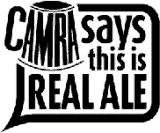
|
|
Phil Mellows
Phil, the grandson of an East End publican, has been writing about
beer and pubs for nearly 20 years, reporting and commenting on what has
probably been the most turbulent period in the history of the industry.
Starting out on the then daily trade paper the Morning Advertiser, he went on to become the award-winning editor of Bass Brewers News. Today, Phil is Features
Editor of The Publican newspaper, Britain's weekly title for the licensed trade. |
Stamp of approval for bottle-conditioned beers
by Phil Mellows
While staying in will never entirely replace going out, the lure of the comfy chair and the wide screen TV - not to mention cheap beer - means that people are increasingly
drinking at home. A third off all beer is now sold through the "off-trade" - licensed grocers, supermarkets and wine merchants. The most worrying aspect of this for beer-lovers, is that the vast majority of that will be
an uninteresting canned lager, bought on price.
Regional and local brewers have made inroads into the supermarket shelves with bottled ales. But is this a good enough alternative for the dedicated cask ale drinker? The
only truly satisfying choice for them has to be a bottled conditioned beer.
Bottle conditioned beers resemble cask conditioned beers in that, thanks to the addition of yeast, they undergo a secondary fermentation in the package. It is a living beer that
earns the Campaign for Real Ale's approval as "real ale in a bottle".
There are plenty of them around - Jeff Evans' latest Good Bottled Beer Guide lists 630 - but consumer awareness is low. There is an education job to be done.
With that in mind, CAMRA has launched a real ale in a bottle accreditation scheme that aims to help drinkers identify bottle conditioned beers and, of course, encourage
more people to try them.
Brewers joining the scheme can badge qualifying products with a logo that reads "CAMRA says this is real ale in a bottle". It might be an ungainly piece of English, but the
idea has tapped into a urgent demand from brewers and more than 40 firms, large and small, have signed up for the pilot project. You should start seeing the logos in the shops now, and from October CAMRA will be working with retailers to raise the profile of bottle conditioned beers and train
shop staff. There are also awards in the pipeline for shops and stores that make a good job of it.
|
|

|
In the longer term CAMRA hopes to persuade supermarkets to display bottle conditioned beers as a separate category, distinct from ordinary ales and lagers, and to
generally improve understanding of them.
One of the challenges is not only to get across what makes bottle conditoned beer different but how they are best stored and served. Because there is live yeast in the
bottle you can't go shaking it about. It should be stored upright - in a dark place - and poured carefully, to quote the leaflet "in a single smooth movement".
Brewers have started using "stickier" yeasts to make the beer less fragile but there's still a daunting educational job to do.
There is also a debate about how long you should keep the bottle before opening it to give the yeast a chance to finish its work. Jeff Evans' advice, in most cases, is simply to
drink it as fresh as possible - but there are exceptions.
These are big obstacles to broadening the drinkership of bottle conditioned ales, but for the drinker the rewards of understanding and patience are a stunning variety of
styles and a satisfying richness of flavour.
|